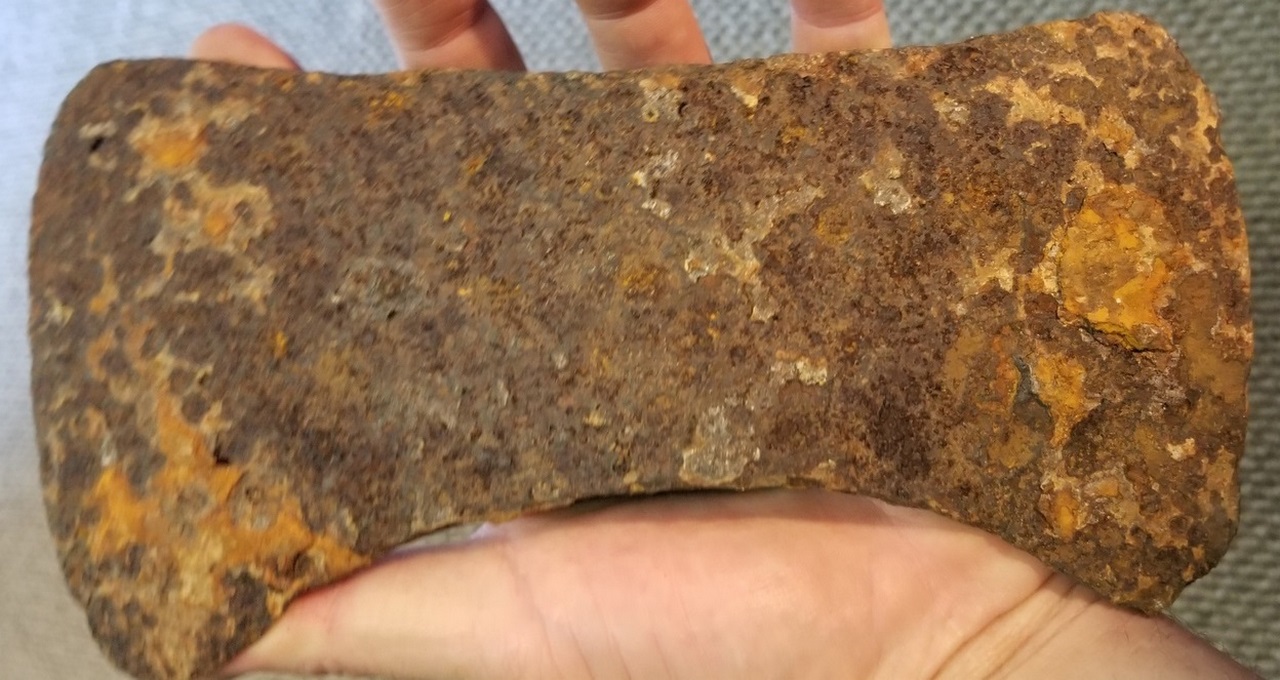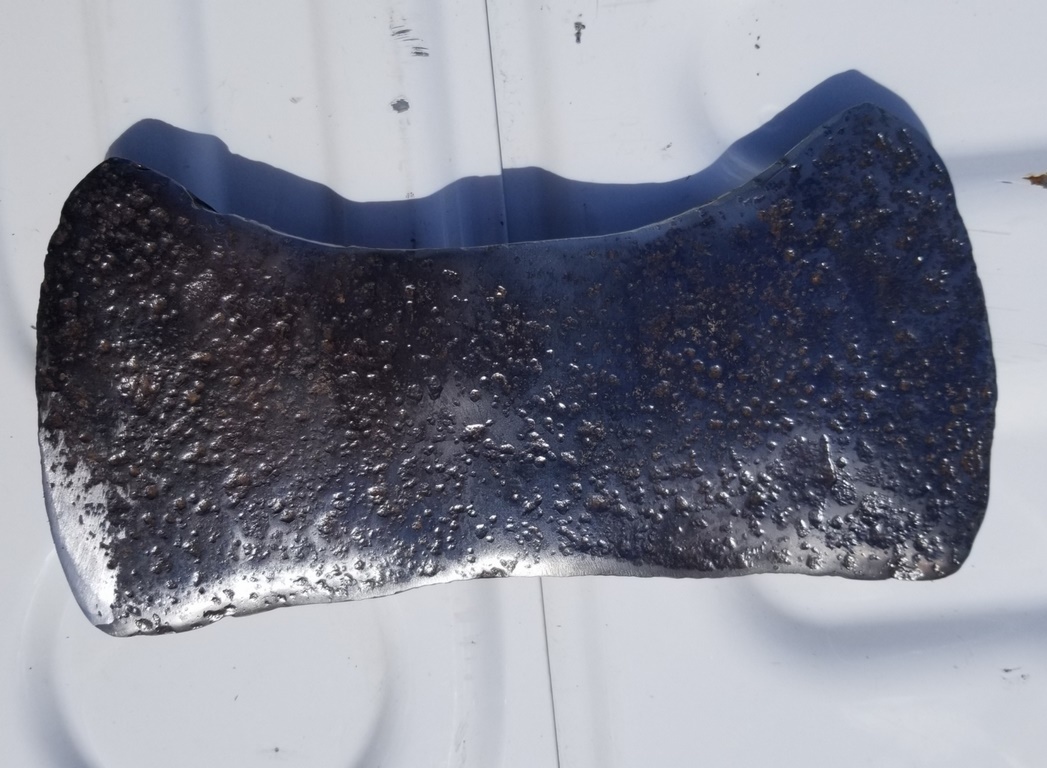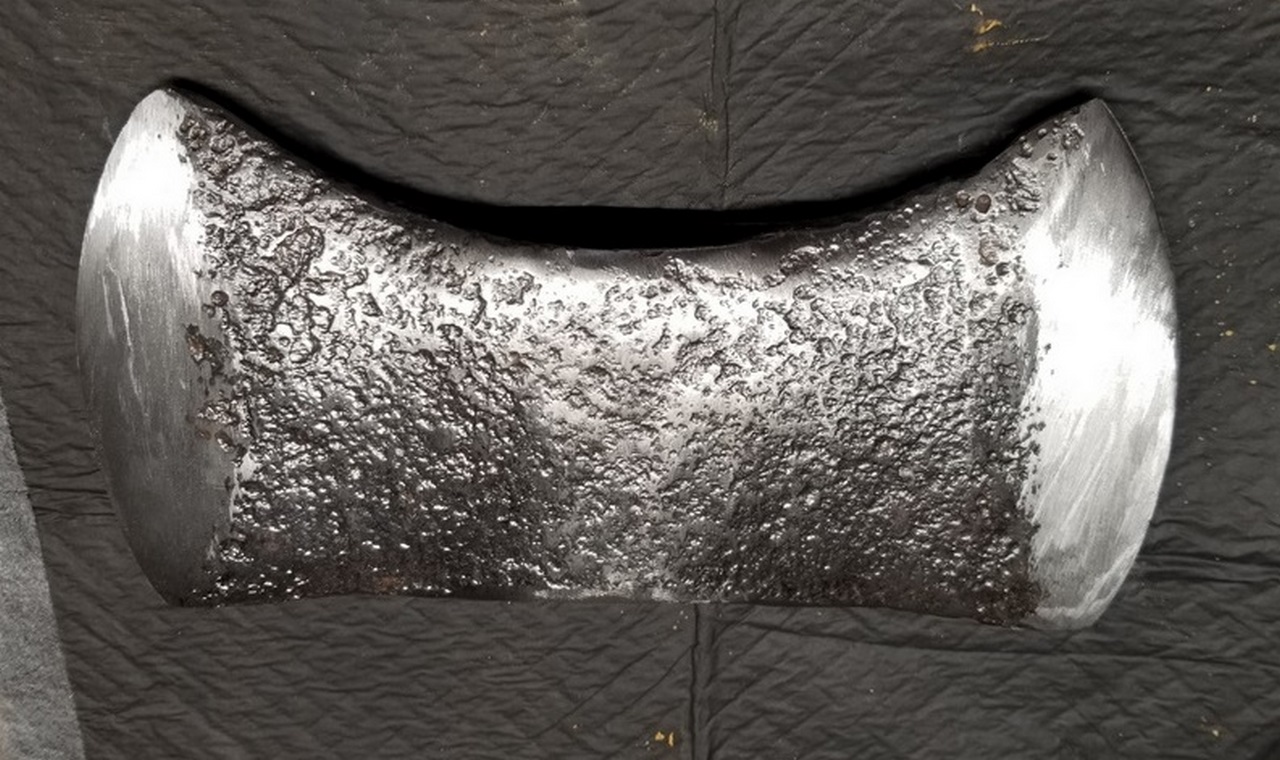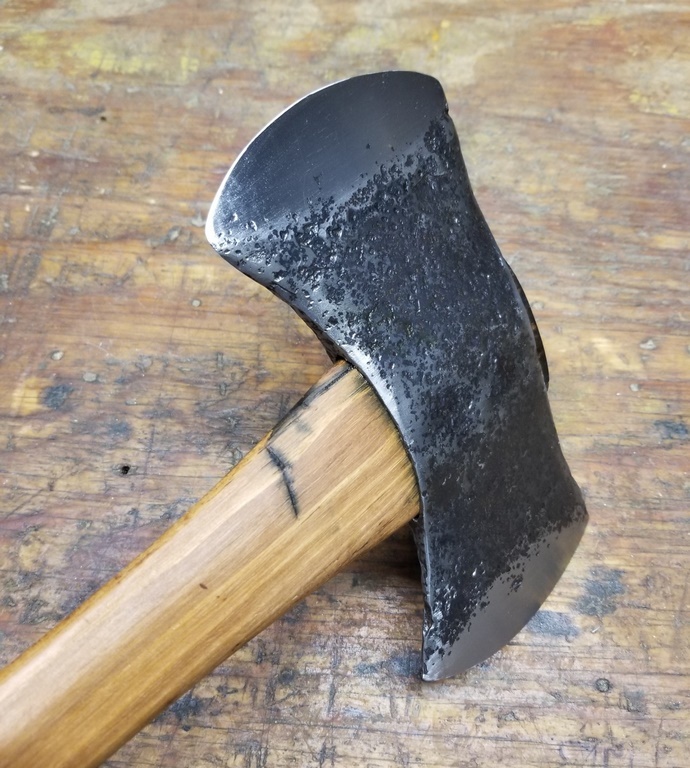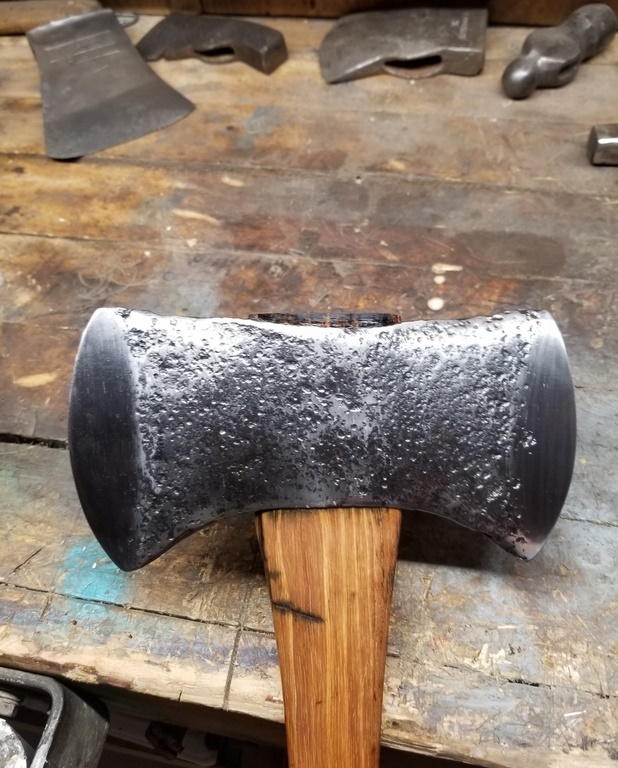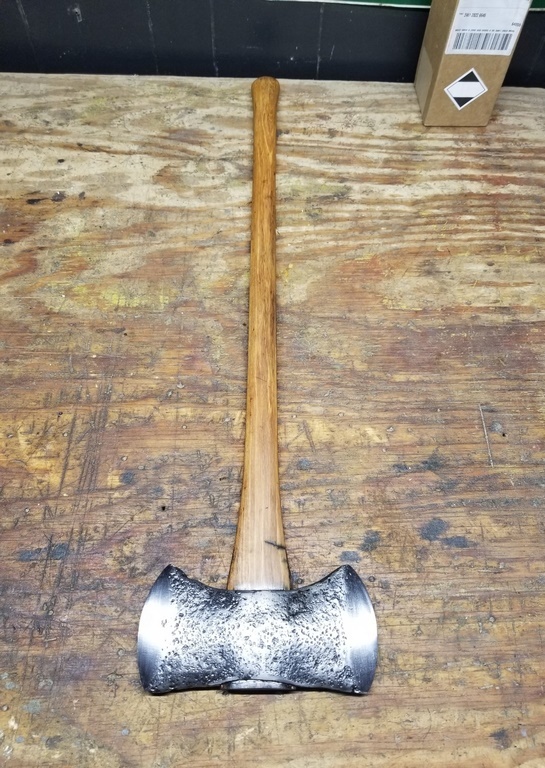Hello All and Happy Thanksgiving,
I'm working on an old Kelly axe head which has a nice patina that I'm trying to preserve, but still clean the steel up a bit to highlight the phantom bevels. The old patina is a mixture of dark brown and black deposits. I'm using a brass cup type wheel but instead of running the risk of swirl marks, I'm spraying wd 40 and scrubbing with it by hand and using some scotch brite pads. I can scrub some areas and get a rust red deposit worked up, so real rust removal. After working some of this off there are also some black deposits that don't look so bad. These are also just in separate places on the face. Doing some reading, I found info about a black type of rust or deposit that may actually be protective. One article had a process to use tannic acid to cause a chemical reaction with the steel that produces a black coating that helps protect the steel. Ive tried a black tea soak with a dark gray result.
See below:
Does anyone have thoughts on the differences in types of rust and maybe which one to leave alone? Thanks SwedeFP
https://www.canada.ca/en/conservati...-notes/tannic-acid-rusted-iron-artifacts.html
I'm working on an old Kelly axe head which has a nice patina that I'm trying to preserve, but still clean the steel up a bit to highlight the phantom bevels. The old patina is a mixture of dark brown and black deposits. I'm using a brass cup type wheel but instead of running the risk of swirl marks, I'm spraying wd 40 and scrubbing with it by hand and using some scotch brite pads. I can scrub some areas and get a rust red deposit worked up, so real rust removal. After working some of this off there are also some black deposits that don't look so bad. These are also just in separate places on the face. Doing some reading, I found info about a black type of rust or deposit that may actually be protective. One article had a process to use tannic acid to cause a chemical reaction with the steel that produces a black coating that helps protect the steel. Ive tried a black tea soak with a dark gray result.
See below:
Does anyone have thoughts on the differences in types of rust and maybe which one to leave alone? Thanks SwedeFP
https://www.canada.ca/en/conservati...-notes/tannic-acid-rusted-iron-artifacts.html

